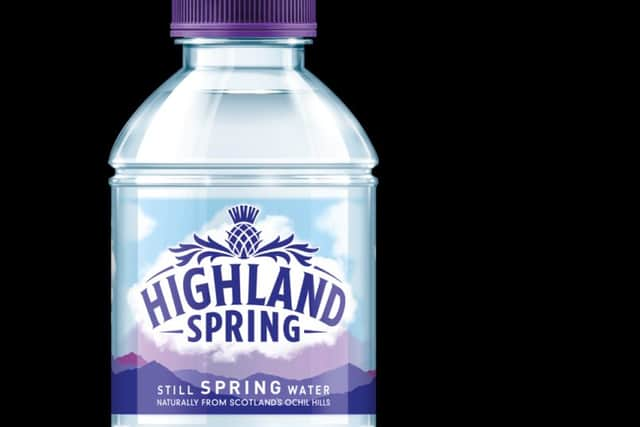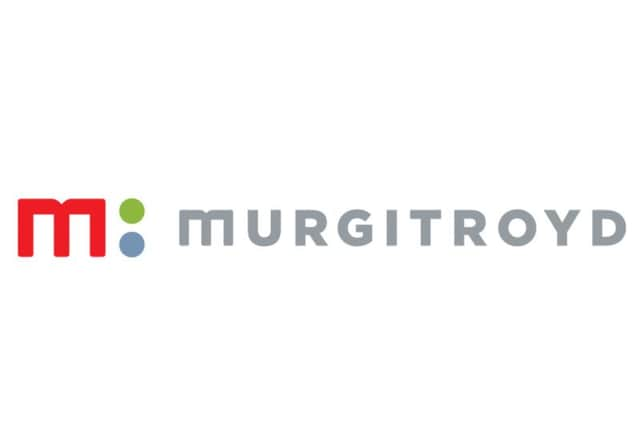The importance of protecting your brand through a trademark


Ever since humans started to trade and circulate goods in earnest, trade marks have played a part, with basic traders’ marks being traced back to the 10th century. Today, with things like the familiar tick of a sports logo, a burger empire’s golden arches and tech giant’s apple with a bite taken out, we’re surrounded by symbols designed to guide consumers and give brands a memorable, easy to recall public face.
Closer to home, familiar trade marks have become embedded into Scottish culture. On drinks cans, whisky bottles and porridge packets, they’re instantly recognisable and proof that the right image can often say much more than words alone.
Advertisement
Hide AdAdvertisement
Hide AdAccording to Eleanor Coates, Glasgow-based Senior Trade Mark Attorney at Murgitroyd, one of the world’s leading intellectual property attorney firms, trade marks are more than a pretty symbol or a clever series of arty lines designed to catch the eye – and stick in the minds – of consumers.


“In today’s world, trade marks are extremely important to businesses as they are intertwined with the quality, likeability, must have appeal and goodwill towards a product or brand,” she explains.
As the public face of a business’s core values and desirability of its products, it pays to get trade marks right. While devising a memorable name or unique design for your business is key, of course, the next key stage is protecting it.
According to Eleanor, while businesses can acquire unregistered rights for a trade mark over time, the protection is limited and could leave them vulnerable to having a carefully constructed logo or symbol hijacked by another.
Safer instead to take early steps to protect trade marks at home and, if trading overseas, abroad, creating a layer of security that can help prevent third party infringement issues, customer confusion or market share erosion.


And while there are many examples of major global players going to war with small traders over trade mark disputes, it’s not only the ‘big guns’ with the well-known logos who take steps to protect themselves.
“It is not just companies such as Nike who register its swoosh house logo,” she says. “British Polythene Industries Limited of Greenock also has its own logo registered in the UK in respect of plastic products.
“Registering it separately from the name British Polythene Industries or BPI means it has far greater scope to prevent third parties adopting a similar logo and causing confusion that it may be a British Polythene Industries company.”
Advertisement
Hide AdAdvertisement
Hide AdWhile it’s possible to simply register a trade mark direct with the UK IPO, ensuring full protection across often complex areas usually requires professional support.


“Utilising a trade mark attorney to file a trade mark application means a professional assessment will be made of what protection could or should be sought, and for what goods and services,” adds Eleanor.
“Their role is to ensure that the right elements are protected in the correct manner to give the business the strongest scope of monopoly against third parties.”
And while at first glance trade marks can look perfectly simple, in fact they are often extremely detailed – another reason why taking the right steps to protect it is vital.
“A product may have a word name, an associated logo and possibly even a shape, which all function as trade marks, or have numerous elements which all act as identifiers of the source of the product to consumers,” explains Eleanor.


“For example, Highland Spring launched its new look bottles in April 2017. Working with Murgitroyd, it sought protection for a number of different trade marks to maximise protection against third party lookalike products.
“For a premium water product, it’s important to be able to prevent lookalike products being able to use these elements, and there is a layering of registrations creating strong, robust protection around the product.”
It’s led to the 3D bottle, the thistle logo, the words Highland Spring with the cloud background and the mountain range on the labelling, all having separate applications aimed at ensuring the brand’s protection is as robust as can be.
Advertisement
Hide AdAdvertisement
Hide AdProducts or services don’t even have to be fully operational to receive trade mark protection – Morrison Glasgow Distiller’s new distillery and visitor centre, The Clydeside Distillery, was given a cloak of security even before launch.
“Publicity and news reports on the project meant the name was in the public arena before the distillery and associated products were available to the public,” explains Eleanor. “In this case, it was key to obtain early protection.”
According to Eleanor, smart businesses should stay on top of trade mark issues. “Identify the trade mark, search the trade mark and protect the trade mark is something all entrepreneurs and businesses should be considering and undertaking on a regular basis.
“Awareness of trade mark rights, both your own and others, and taking early action to assess your position and secure your own rights before launch will avoid many potential pitfalls.”
To find out more visit www.murgitroyd.com/trade-marks